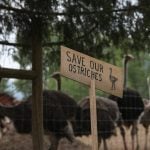WINNIPEG — Spring seeding operations in Saskatchewan are nearing completion, with 93 percent of intended acres in the ground as of June 9, as relatively dry weather in most areas allowed producers onto their fields, according to the latest weekly report from Saskatchewan Agriculture.
The pace was slightly behind the previous year when seeding was 96 percent complete but above the five-year average of 87 percent complete by this time of year.
The southeastern and east-central parts of the province were farthest behind in seeding, with 10 to 11 percent of intended acres still unplanted in the region.
Read Also

Federal budget shows remaining disconnect between agriculture, policymakers, panelists say
Canada’s agriculture sector is still disconnected from policymakers in some ways, say panelists at a CAPI webinar
Rainfall during the week varied from trace amounts to well over two inches in some east-central areas. Provincially, topsoil moisture conditions on cropland were rated as 15 percent surplus, 78 percent adequate and seven percent short. Hay land and pasture moisture conditions were rated as nine percent surplus, 81 percent adequate, seven percent short and three percent very short.
Cool weather has delayed crop development in many parts of the province, according to the report. The majority of fall cereals were in the tillering to jointed stages of crop development, while most spring cereals were in the emerging to tillering stages. Pulse crops were emerging and in the vegetative stages, and flax crops were mostly in the pre-emergent or emerging crop stages. Canola and mustard crops were emerging or at the seedling stage of crop development.
Crops were generally in good condition, although localized flooding, frost, hail, wind and insects accounted for some minor damage.














